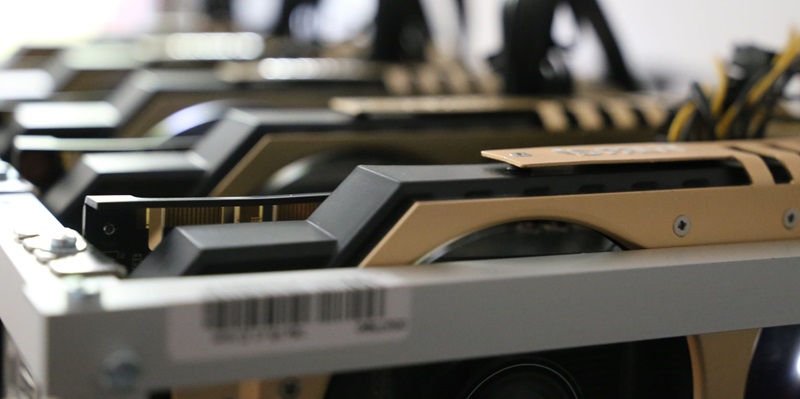Video encoding has become an essential aspect of media consumption and production, enabling efficient storage and streaming. Handbrake, a popular open-source video transcoding tool, recently unveiled an exciting update by incorporating AV1 encoding support for two prominent graphics processing units (GPUs): NVIDIA’s “Ada” GeForce RTX 40 and AMD’s “RDNA 3” Radeon RX 7000. This development marks a significant step forward in the industry, promising enhanced video quality, reduced file sizes, and improved streaming experiences.
AV1 encoding support for NVIDIA’s “Ada” GeForce RTX 40 and AMD’s “RDNA 3” Radeon RX 7000 GPUs
Handbrake’s integration of AV1 encoding support is a game-changer for users utilizing NVIDIA’s “Ada” GeForce RTX 40 and AMD’s “RDNA 3” Radeon RX 7000 GPUs. This update allows Handbrake to leverage the power of these high-performance GPUs for efficient video transcoding, significantly enhancing productivity and speeding up the encoding process.
Utilization of AMD’s VCN AV1 Encoder and NVIDIA’s NVENC AV1 Encoder
Handbrake’s AV1 encoding support includes the utilization of AMD’s VCN AV1 encoder, which is exclusively available on RDNA 3 Radeon RX 7000 GPUs. Similarly, NVIDIA’s NVENC AV1 encoder, featured on GeForce RTX 40 “Ada” GPUs, can also be leveraged. These dedicated hardware encoders enable faster and more efficient video encoding, delivering outstanding visual quality while maintaining low file sizes.
Preparing for Handbrake’s new capabilities
To take full advantage of Handbrake’s AV1 encoding capabilities, it is crucial to install the latest drivers for your respective GPUs. By ensuring up-to-date drivers, users can experience a streamlined encoding process, minimizing any potential compatibility issues that may arise.
Performance improvements in the encoding process
Handbrake’s latest update brings several performance enhancements to the video encoding process. Firstly, the removal of unnecessary frame copies improves memory efficiency, resulting in faster video conversion speeds. This boost in speed allows users to accomplish their encoding tasks more efficiently than ever before.
Additionally, Handbrake has made significant improvements in Dolby Vision dynamic range metadata pass-through. By preserving the metadata during the encoding process, Handbrake ensures that the video retains the intended dynamic range and delivers an optimal viewing experience on compatible displays.
Furthermore, HDR10+ dynamic range metadata pass-through has also been improved. With Handbrake’s updates, users can maintain the vividness and brightness of HDR10+ content, providing a visually stunning experience to viewers.
FFmpeg updates for faster decoding and filters
Handbrake incorporates the latest version of FFmpeg, a powerful multimedia framework, bringing about faster HEVC decoding. Users can now enjoy accelerated decoding speeds, resulting in quicker transcoding and reduced processing time.
Additionally, the latest FFmpeg version introduces a 30% improvement in the bwdif filter. This enhancement significantly enhances video quality, particularly when dealing with interlaced content, making Handbrake a more versatile tool for various video encoding needs.
SVT-AV1 Assembly Optimizations for Increased Performance
Handbrake’s integration of new SVT-AV1 assembly optimizations delivers a substantial performance boost. These optimizations can provide up to a four-fold increase in encoding speeds, allowing users to transcode videos swiftly and efficiently. This improvement is particularly noteworthy for users handling large video files or batches of media, optimizing their workflow and reducing time-to-completion.
Improved performance on arm64/aarch64/Apple Silicon architectures
Handbrake’s latest update also brings improved performance on arm64/aarch64/Apple Silicon architectures. With optimized compatibility and performance, users on Apple devices utilizing these architectures can benefit from accelerated video encoding, contributing to a smoother and more efficient transcoding experience.
Comparison between NVIDIA and AMD in AV1 encoding capabilities
The addition of AV1 encoding support for NVIDIA’s “Ada” GeForce RTX 40 and AMD’s “RDNA 3” Radeon RX 7000 GPUs highlights their commitment to advancing video encoding technologies. While NVIDIA’s “Ada” GPUs have the advantage of incorporating the NVENC AV1 encoder, AMD’s “RDNA 3” GPUs have exclusive use of the VCN AV1 encoder. This competition between the GPU giants will undoubtedly drive further innovation and improvements in AV1 encoding capabilities.
However, it is worth noting that AMD needs to accelerate its efforts in this particular area to match NVIDIA’s advancements. As the demand for video encoding continues to rise, AMD will need to invest in refining their AV1 encoding technologies to provide users with competitive and compelling options.
Handbrake’s inclusion of AV1 encoding support for NVIDIA’s “Ada” GeForce RTX 40 and AMD’s “RDNA 3” Radeon RX 7000 GPUs is a significant milestone for the video encoding industry. The utilization of dedicated hardware encoders and various optimizations allows users to achieve superior video quality, reduced file sizes, and enhanced encoding speeds. As NVIDIA and AMD continue to push boundaries, it is certain that the competition between these GPU giants will result in further advancements, benefiting end-users and driving the evolution of video encoding technologies.

